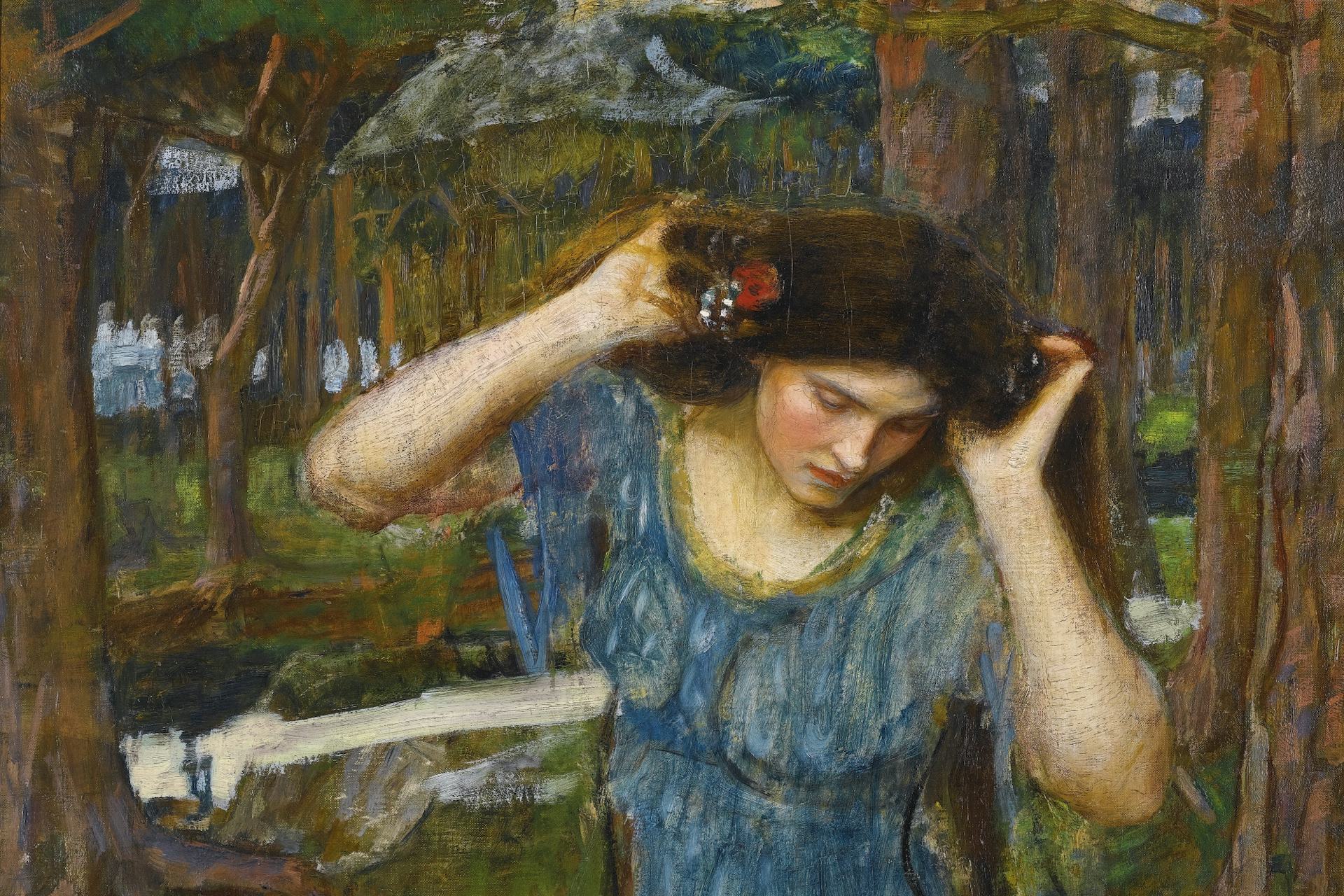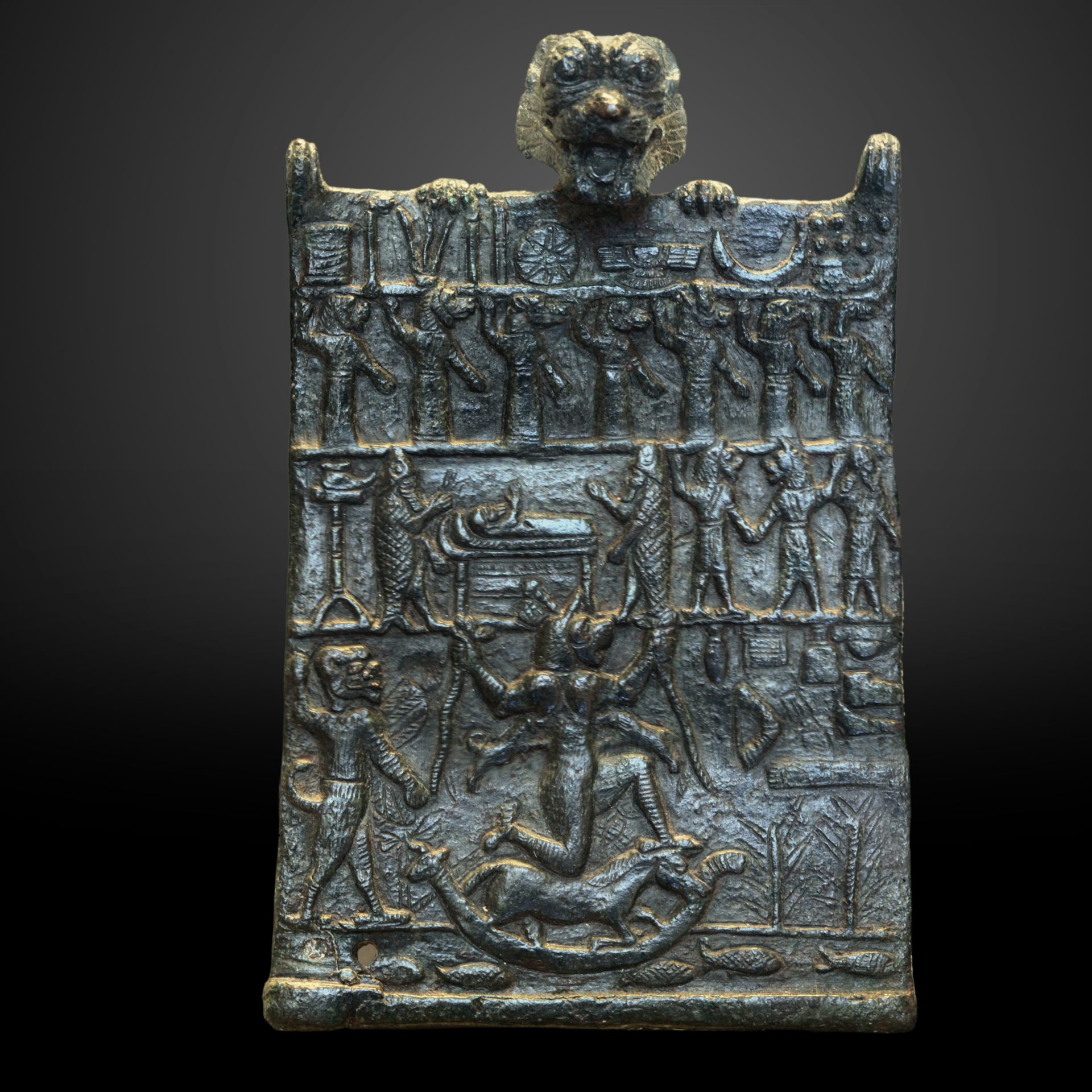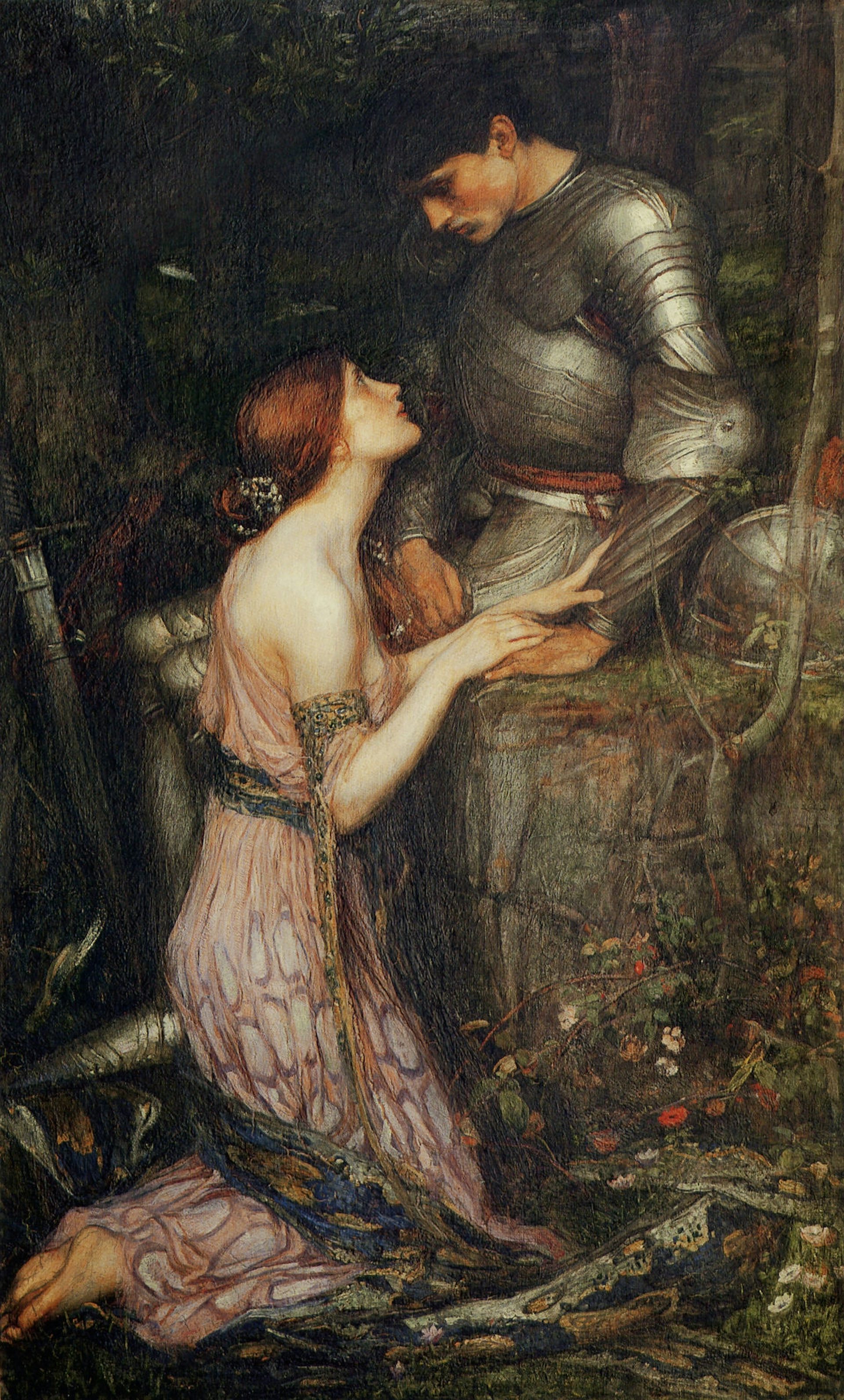Lamia

Vain Lamorna, A Study for Lamia by John William Waterhouse (n.d.).
Wikimedia CommonsPublic DomainOverview
Lamia was a female monster or spirit who belonged to the world of Greek popular religion. Usually represented as a hideous, foul-smelling creature, her most distinctive feature was her eyes, which she could remove from her head and store in a box.
Lamia primarily hunted young children, sometimes even snatching them from their mothers’ breasts and devouring them on the spot. In later traditions, however, she would often take on the form of a beautiful woman in order to lure young men to her bed, where she would feed on their flesh. In some myths, Lamia (or a Lamia-like creature) was eventually slain by a brave hero.
The evidence for Lamia’s mythology is sparse and contradictory. Some tales describe her as having once been a beautiful woman loved by Zeus who was later punished by Zeus’ jealous wife Hera; others present her as a monster sent by the gods to punish mortals who angered them. To make matters even more confusing, though she was originally represented as a single monster, some later sources spoke of an entire class of creatures known as “lamiae” or “lamias.”
Etymology
The name “Lamia” (Greek Λάμια, translit. Lámia) is often thought to come from the Greek word λαιμός (laimós), meaning “jaw”—the feature she used to devour her victims.[1] But it is also possible that Lamia’s name was derived from the Mesopotamian demon Lamasthu, a creature who, like Lamia, was known for devouring children.[2]
Pronunciation
English
Greek
Lamia Λάμια (translit. Lámia) Phonetic
IPA
[LEY-mee-uh] /ˈleɪ mi ə/
Attributes
Locales
Lamia was not usually connected with any specific locations, though a few sources placed her home in Libya or North Africa.[3] In one tradition, she was taken by Zeus from Libya to central Italy, where the city of Lamia was named after her. In another tradition, Lamos, the city of the cannibalistic Laestrygonians, was also named for her.[4]
There were also some myths in which Lamia (or multiple lamias) terrorized the cities of Greece, including Argos and Delphi (see below).
Appearance and Abilities
Lamia was a female spirit, known for carrying off young children and devouring them.[5] In this, she was reminiscent of other malevolent spirits from Greek mythology, including Mormo and Gello.
Lamia was usually represented as an ugly female monster with removable or detachable eyes (probably her most distinctive attribute).[6] She also emitted a terrible stench and may have been a hermaphrodite.[7] Later sources sometimes gave her the ability to shape-shift.[8]
We know little else about how Lamia was imagined in antiquity. There are, however, a few detailed descriptions of creatures who may or may not have been Lamia (the sources do not clearly identify them). One possible description of Lamia comes from Statius’ Thebaid, where the creature is part-woman and part-snake, with snakes for feet, a snake growing out of her head, and sharp talons: “A maiden’s face and bosom has she, from her head an ever-hissing snake rises erect, parting in twain her livid brow.”[9]
In later sources, Lamia acquired a new pastime: in addition to stealing and devouring babies, she would also seduce and destroy attractive young men, like a vampire or succubus.[10] To accomplish this, she would take on a more agreeable form (the terrifying part-serpent form so well suited to stealing babies was hardly ideal for the art of seduction).
According to one source that may have been describing Lamia (though again, the monster is not identified by name), there was a two-headed creature from Libya who seduced young men. Above the waist, she was a beautiful woman, but below the waist she had a snake body that culminated in a terrible snake head. She also had vicious claws that she used to seize her prey. With her fearsome parts concealed, this Lamia or Lamia-like creature would entice young male passersby; when they were close enough, she would snatch them and feed on their flesh.[11]
Iconography
There are no clear representations of Lamia from the ancient visual arts. However, a hairy female monster shown on a few vase paintings from the Classical period (490–323 BCE) has been identified by some scholars as a depiction of Lamia.[12]
Family
Family Tree
Mythology
Origins
Lamia did not have a stable or consistent mythology in antiquity. In general, she was depicted as a female spirit who carried off children. While some sources did give her unique myths, others attributed those same myths to different monsters, or to monsters with no name. It is therefore difficult to say with any certainty who the mythical Lamia was or where she came from.
The Lamia myth itself most likely came to Greece from the Near East. She may have been inspired by Lamashtu, a female demon of Mesopotamian lore (even their names are similar; see above). Lamashtu was shown with the naked body of a woman, a lion’s head, and the feet of a bird of prey, with a pig and dog suckling at her breasts; she often had a snake in each hand and was depicted standing on a donkey, who would itself be standing on a ship. Like Lamia, Lamashtu carried away young children.[17]

The “Lamashtu Placque” (between 9th and 7th century BCE). The demon Lamashtu is shown on the bottom center. She hold a snake in each hand, has a pig and a dog at her breasts, and is kneeling upon a donkey that is kneeling upon a ship. Louvre Museum, Paris, France.
RamaCC BY-SA 3.0According to some Greek sources, Lamia was originally a princess or queen of Libya, the daughter of Libya and Belus or, possibly, of Poseidon (see above). A very beautiful young woman, she soon attracted the attention of Zeus and became his lover. This caused Hera, Zeus’ divine wife, to become jealous. To punish Lamia, Hera killed the children Lamia bore to Zeus, or caused Lamia to kill them herself. As a result, Lamia went mad with grief and began to steal and kill the children of other women.[18]
In some versions of the myth, Hera also deprived Lamia of the ability to sleep. But Zeus took pity on her and allowed her to remove her eyes and store them in a box, thus making her eternal wakefulness less terrible.[19] In another version, Hera simply tore out Lamia’s eyes and threw them into the mountains.[20]
A rationalized version of this myth also existed in antiquity. According to the historian Diodorus of Sicily, Lamia was once a beautiful queen of Libya. She gave birth to several children, but they all died. Overcome by grief and envy, Lamia ordered her men to snatch the babies from the mothers of the kingdom and kill them. Over time, Lamia’s cruelty caused her beauty to fade and become monstrous. The memory of this terrible queen, says Diodorus, eventually gave rise to the myth of the “monster” Lamia.[21]
Lamia and the Heroes
There are a few heroic myths that may have featured Lamia. Whether the creature in these myths is the Lamia (with a capital “L”) or simply a monster of the lamia class is not clear (nor do all versions even use the name “Lamia” to describe the monsters in these myths). In any case, the following myths were probably connected in some way with Lamia, even if it is difficult to state the exact nature of that connection.
Lamia of Argos
According to one myth, the god Apollo had impregnated a girl named Psamathe, the daughter of the Argive Crotopus. Psamathe gave birth to a son, Linus, whom she left in the wilderness, fearing that her affair would be discovered. But Crotopus found out anyway (in one account, Psamathe told him herself, driven by grief after the infant Linus was torn apart by sheepdogs). In a rage, Crotopus executed Psamathe.
Now it was Apollo’s turn to fly into a rage. He punished the Argives by sending a monster to snatch babies away from their mothers and devour them (only one very late source calls this monster Lamia; others call it Poene or Ker, or do not name it at all). Eventually, a brave young Argive named Coroebus killed the monster, after which the people of Argos desecrated the putrid corpse.
But this only made Apollo angrier. He sent another punishment to decimate the Argives, one that could not be dispatched with mere violence: a plague. Apollo revealed that the only way to avert this plague was to sacrifice the monster’s killer. Without hesitation, Coroebus went to Apollo’s sanctuary at Delphi and offered himself to the god, as he was the one who had slain the monster.
Apollo was so impressed by Coroebus’ courage that he decided to spare him. But the god ordered Coroebus never to return to Argos again. Instead, the young hero was to leave Delphi with one of the sacred tripods and carry it until he could no longer hold it. There, on the spot where he dropped the tripod, he was to found a new city. Coroebus did as he was commanded, eventually founding the city of Tripodisci (“Little Tripods”) in the Megarid.[22]
Lamia of Crissa
In a lesser-known story, a monster called either Lamia or Sybaris lived in a cave in Mount Cirphis, not far from Crissa, in the Greek region of Phocis. This monster would periodically go out to Delphi, where it would attack the people and steal their livestock.
Apollo eventually revealed that the Delphians could be delivered from the monster if they sacrificed a young man to it. The people drew lots to decide who should be sent as a sacrifice, and a handsome young man named Alcyoneus was chosen.
As Alcyoneus was being led away, however, another young man, Eurybatus, fell in love with him and volunteered to be sacrificed in his place. Eurybatus went to the monster’s lair, where he overpowered the beast and threw her down the mountain. The wounded Lamia then transformed into a spring that was called Sybaris. Later, a city in Magna Graecia (in central Italy) was also named Sybaris.[23]
Other Stories: The Greeks and Beyond
In later periods, lamias became even more widespread in tall tales and folklore. Unlike their child-eating predecessors, these lamias were known for using their feminine charms to seduce and destroy young men.
Philostratus’ biography of the first-century CE sage Apollonius of Tyana—a work full of strange and miraculous occurrences—describes an encounter between Apollonius and a lamia or empusa (the terms are used interchangeably). In Corinth, says Philostratus, one of Apollonius’ pupils, a handsome young man named Menippus, was targeted by a lamia. This lamia (the “Lamia of Corinth”) pretended to be a beautiful and rich Phoenician woman and set out to seduce Menippus.
Despite Apollonius’ warnings, Menippus decided to marry the deceitful phantasm. On the wedding day, however, Apollonius was able to show Menippus that all of his bride-to-be’s wealth was an illusion. He even forced the creature to admit what she really was: a lamia or empusa who wished to fatten Menippus up so that she could feed on his flesh.[24]

Lamia and the Soldier by John William Waterhouse (1905).
Wikimedia CommonsPublic DomainOthers connected Lamia with witchcraft. In Apuleius’ Golden Ass, for example, the Thessalian witches Meroe and Panthia are described as “lamias.”[25] Lamia also became increasingly interchangeable with other child-eating spirits, such as Mormo and Gello.[26]
Lamia remained important in Byzantine and medieval sources, which referred to a class of ghostly spirits or monsters, lamias, who snatched babies away from their mothers or seduced men (including married men).[27]
Pop Culture
Lamia continues to haunt the contemporary imagination. In Greece, belief in Lamia as an evil spirit never went away. Creatures of European folklore like vampires and succubi also draw on the myth of Lamia.
Lamia has inspired numerous poems (such as John Keats’ “Lamia”), operas (August Enna’s Lamia), and novels (Tristan Travis’ Lamia). In the 2009 horror film Drag Me to Hell, Lamia is reimagined as a male goat-demon who torments his human victims for three days before having his minions drag them down to hell.
Lamia also features in more straightforward contemporary adaptations of Greek mythology. In Rick Riordan’s The Demigod Diaries, for instance, Lamia is represented as a reptilian creature with glowing eyes.